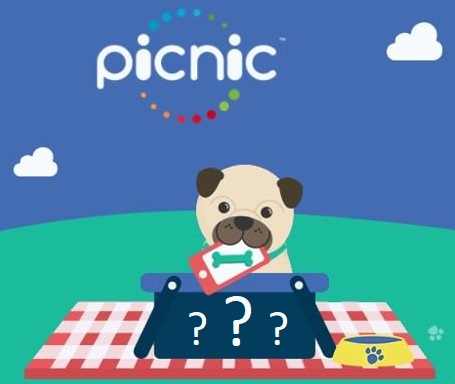4 Ways To Avoid Loyalty Backlash
jodithepug
Posted on October 19, 2023 - 0 Comments

by Steve Bocska
Steve is the CEO and founder of PUG Interactive Inc., a company specializing in maximizing lifetime customer value through relationship orchestration. With over 20 years of experience in the gaming industry, Steve focuses on applying loyalty, engagement, and gamification to enhance user experiences in non-game contexts.
In today’s fiercely contested marketplaces, customer loyalty has emerged as a potent elixir for corporate well-being, corroborated by the staggering 3.3 billion memberships in loyalty programs across the United States alone. When executed well, these programs create a cascading effect of benefits—from increased purchases to robust word-of-mouth promotion. Yet, lurking beneath this cheerful landscape of rewards and incentives is an insidious danger: customer loyalty backlash.
Addressing the pitfalls requires a calibrated strategy that honors the fine line between fostering loyalty and provoking resentment. Stifling restrictions, baffling terms and conditions, or impersonal rewards can rapidly extinguish customer enthusiasm. Thus, companies must reimagine their loyalty programs as finely tuned orchestras, playing in harmonious synchrony with individual customer needs and expectations. This necessitates data-driven insights that allow retailers to customize rewards, personalizing the loyalty experience in meaningful ways. The failure to capture and reflect individual preferences within a loyalty program can foment a sense of irrelevance among members. When generic rewards clash with specific tastes, the disappointment can propel customers toward competitors who provide a more customized experience. The exodus is not merely a loss of interaction—it’s a failure of the brand to resonate at an emotional level.
1. Emotional Payoffs
Technological advancements offer potent tools to navigate this complex terrain. By harnessing big data and analytics, companies can dissect customer behaviors and preferences, designing bespoke loyalty programs that resonate on an individual level. Such programs shouldn’t just offer material rewards, but emotional payoffs. They should recognize the unique journeys and needs of each customer, transforming the program into an effective mechanism for demonstrating the brand’s commitment to its clientele. In an era where consumers are inundated with choices, loyalty programs must evolve from transactional incentives to emotional connections. For instance, offering “exclusive access” to certain experiences can rekindle the spark of loyalty. These unique experiences add an extra layer of engagement and can serve as effective antidotes to moments of frustration. The intrinsic value of such rewards far outweighs mere price discounts or gifts, especially when customers are navigating the frustrations of service failures.
2. Feel the Need
Indeed, the most effective loyalty programs are those that anticipate customer needs and address them proactively, thereby immunizing against the risks of loyalty backlash. Instead of adopting a myopic focus on fixing frequent service hiccups, retailers should adopt a panoramic view that captures the complete customer journey. The challenge lies not just in resolving issues but in doing so in a manner that resonates emotionally, truly recognizing the customer’s loyalty. In this complex choreography, the nuances are many, but the essence is clear: Loyalty programs must not only offer value but must also make customers feel valued. By embracing this dual imperative, companies can forge relationships that withstand the vicissitudes of customer dissatisfaction, laying the foundation for long-term loyalty that is both resilient and rewarding.
3. Engagement as a Currency
Think of the loyalty program as less a marketing scheme and more a kind of social contract between a corporation and its patrons. In simple terms, the customer offers their engagement, often crystallized through purchases, based on an implicit understanding: the brand will cherish this engagement. It’s not merely about accumulating points or snagging a discount. This is a psychological pact. And when this pact is broken, the tremors reach far and wide, amplified by the megaphone of social media. Consider the scenario in which a dedicated loyalty program member, having accrued a stash of points with a specific reward in sight, finds herself ensnared in a convoluted process of point redemption. This is more than a simple operational hiccup; it represents a corrosion of trust. A breach like this threatens to metamorphose loyalty into skepticism and, if left unchecked, outright antagonism. In this environment where everyone’s smartphone buzzes with notifications every other second, effective communication becomes a scarce commodity. The balancing act is almost surgical in nature. A poorly timed or irrelevant message can push a consumer from mere disengagement to active avoidance of the brand. So, communication must be not just targeted but also meaningful, designed to register as a value-added interaction rather than as noise.
4. Emotional Loyalty
The Holy Grail is not transactional loyalty—that’s table stakes—but emotional loyalty. This is a nuanced blend of reliability, individualized attention, and yes, a smattering of good old-fashioned surprise and delight, cultivated responsibly through analytics. But this artful dance of data science and human intuition works only when all its elements are transparently presented to the consumer. It’s a complex machine, this loyalty program, not unlike a finely crafted watch. Each gear, each spring serves its purpose, but the true genius lies in how they come together, in how a brand balances hard economic incentives with a genuine sense of mutual respect and understanding. Far from being a nice-to-have, loyalty programs are critical architecture in the edifice of modern commerce. Done right, they don’t just retain customers; they create ambassadors.
On the balance sheet, loyalty programs move from being cost centers to strategic assets. By meticulously parsing customer data, companies can tailor the nature and timing of rewards, optimizing both the customer experience and the allocation of internal resources. But let’s not get lost in the bytes and algorithms. The success stories here are woven not just through lines of code but through clarity and simplicity, by creating an interface that treats customers not as data points but as sentient, busy humans.
Keep Reading...

Podcast: A Fresh Take on Loyalty Programs with Steve Bocska
by Steve Bocskait's not uncommon today for businesses to fall

World of PUG Blog April 3, 2024
PUG Announces Launch of AI-Driven Intelligent Rewards System (IRS)
by Steve BocskaPress ReleaseFOR IMMEDIATE RELEASEPUG Interactive Launches Intelligent Rewards

World of PUG Blog April 3, 2024
PUG Interactive Unveils InsightPulse: A Revolutionary Predictive AI Analytics Dashboard
by Steve BocskaPress ReleaseFOR IMMEDIATE RELEASEPUG Interactive Unveils InsightPulse: A


